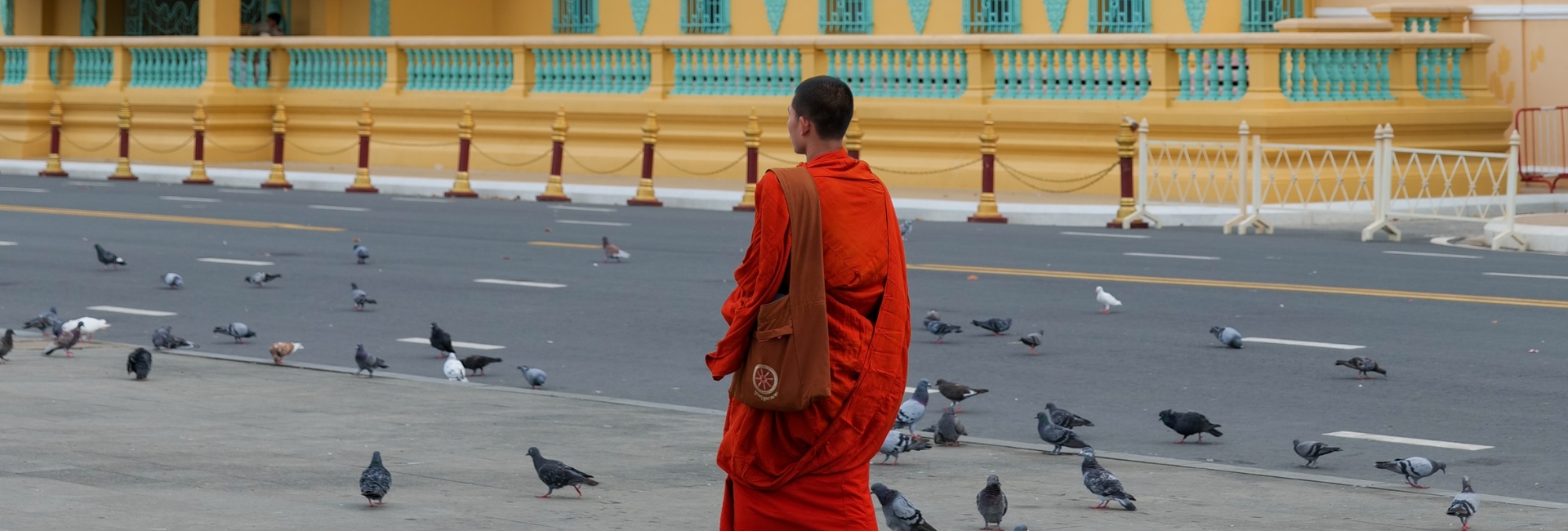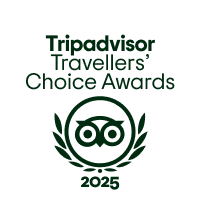Cambodia in July offers a unique travel experience during the heart of the monsoon season. While many travelers shy away from visiting during this time, the rainy season brings its own charm – lush landscapes, fewer tourists, and lower prices. If you’re wondering whether to plan your Cambodian adventure during this wet month, read on to discover everything you need to know about visiting Cambodia in July.
What is the Weather Like in Cambodia in July?
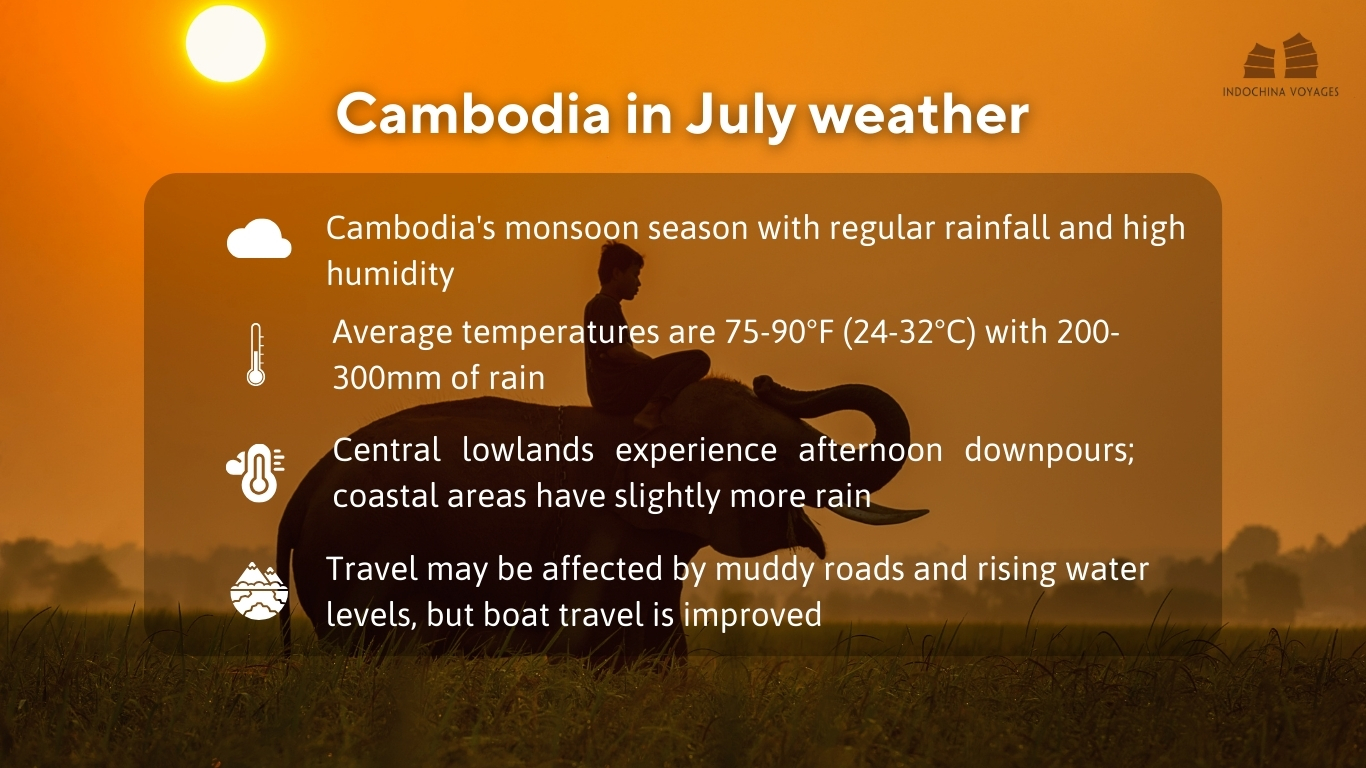
July marks the peak of Cambodia’s monsoon season, characterized by regular rainfall, high humidity, and overcast skies. However, the weather patterns vary across the country’s diverse landscape of mountains, lowlands, and coastal areas.
Cambodia experiences a tropical climate with two distinct seasons: the dry season (November to April) and the wet season (May to October). July falls firmly within the wet season, bringing significant rainfall that transforms the countryside into vibrant shades of green.
Temperature and Rainfall:
- Average temperatures: 75-90°F (24-32°C), with highs around 90°F (32°C) and lows of 75°F (24°C)
- Average rainfall: 200-300mm throughout the month
- Humidity levels: 70-85%, creating a warm, muggy atmosphere
The rainfall pattern in July typically consists of intense afternoon downpours rather than all-day precipitation. Mornings often start clear before clouds build up throughout the day, culminating in heavy but brief rain showers in the late afternoon or early evening. These showers usually last for an hour or two before clearing up.
Regional weather variations are notable across Cambodia:
- Central lowlands (including Siem Reap and Phnom Penh): Experience the typical monsoon pattern with warm temperatures averaging 27°C and afternoon downpours.
- Coastal areas (Sihanoukville, Kep): Slightly higher rainfall than inland areas, with similar temperatures and high humidity.
- Highland areas (Cardamom Mountains): Cooler temperatures due to elevation but still experiencing significant rainfall.
The good news is that despite the frequency of rain, you’ll still find periods of sunshine between showers. The landscape comes alive during this season, with rice paddies at their most vibrant green and waterfalls at their most impressive.
Due to the monsoon weather in July in Cambodia, it will have affect travel conditions in several ways:
- Roads in rural areas can become muddy and sometimes temporarily flooded
- Water levels in rivers and lakes rise significantly
- Outdoor activities may require flexible scheduling around rain showers
- Boat travel becomes more viable as waterways fill
Despite these challenges, many experienced travelers find July’s weather conditions add a dramatic backdrop to Cambodia’s ancient temples and create unique photographic opportunities as storm clouds gather over Angkor Wat.
>> Cambodia in June Weather: Best Guide for Cambodia Trip
So, Is July a Good Time to Visit Cambodia?
Whether July is an ideal time to visit Cambodia depends largely on your priorities and expectations. The monsoon season brings both challenges and unique advantages that may appeal to certain types of travelers.
Advantages of Visiting in July
- Fewer tourists: Major attractions like Angkor Wat see significantly reduced crowds
- Lush landscapes: The countryside transforms into vibrant shades of green
- Photographic opportunities: Dramatic skies and reflective surfaces create stunning photo conditions
- Lower prices: Accommodations and tours often offer substantial discounts (20-40% lower than peak season)
- Authentic experience: With fewer tourists, you’ll have more genuine interactions with locals
- Comfortable temperatures: Despite the humidity, temperatures are actually more moderate than the scorching hot season
Challenges to Consider
- Unpredictable weather: Daily rain showers require flexible planning
- Muddy conditions: Rural roads can become difficult to navigate
- Limited beach activities: Coastal areas experience rougher seas and reduced visibility for diving
- Humidity: The air can feel heavy and muggy, especially in urban areas
July is particularly good for travelers who want to explore Cambodia’s cultural sites without the crowds and who don’t mind adapting their plans around afternoon showers. If you’re primarily interested in cultural exploration rather than beach activities, July offers a unique perspective on Cambodia.
The rain actually enhances many experiences – the temples of Angkor look mystical emerging from the mist, and the countryside bursts with life. As long as you pack appropriate rain gear and maintain a flexible attitude, July can provide a rewarding and authentic Cambodian experience.
Where to Go in Cambodia in July?
Cambodia in July experiences rainfall throughout the month, but there are still dry periods that allow for exploration. The morning hours typically offer clearer skies, making it an ideal time to visit various destinations before the afternoon downpours begin.
Visit Angkor Temples in Siem Reap
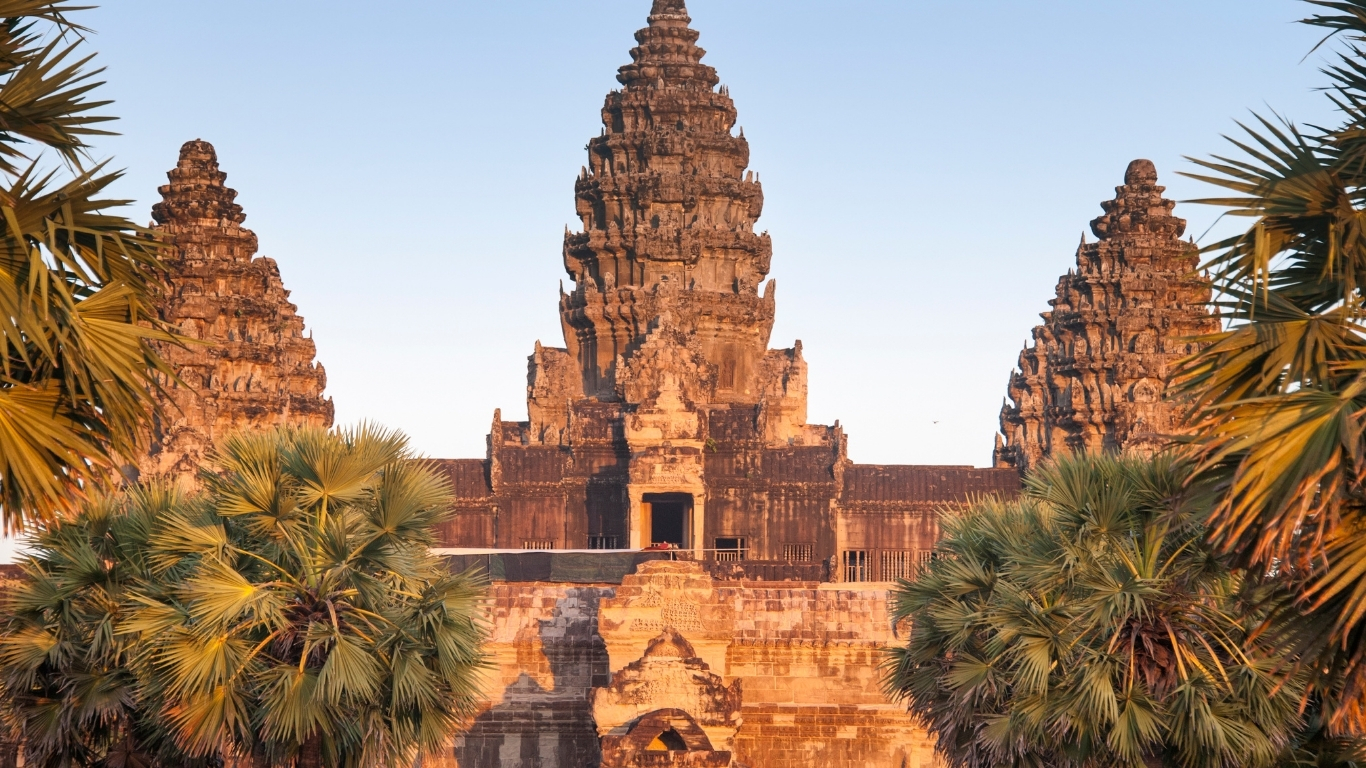
Siem Reap and the Angkor Archaeological Park offer a unique experience during the rainy season. The ancient temples take on a mystical quality when surrounded by lush greenery and reflecting pools.
The Angkor complex is particularly atmospheric in July for several reasons:
- The moats and reservoirs fill up, returning the water features to their original design
- The surrounding forests become vibrant green, creating a striking contrast with the stone temples
- Morning mist often shrouds the temples, creating ethereal photo opportunities
- Significantly fewer tourists mean you can explore popular temples like Bayon and Ta Prohm without crowds
For the best experience, plan your temple visits for early morning (starting at sunrise) to maximize dry weather hours. The rain typically arrives in the afternoon, so structure your day accordingly. Consider spending 3-4 days exploring different temple groups to allow for weather flexibility.
The countryside around Siem Reap also transforms during this season. The rice paddies fill with water, reflecting the sky and creating beautiful landscapes. Tonle Sap Lake begins its dramatic annual expansion, making July an excellent time to visit floating villages when water levels are rising but not yet at their peak.
Phnom Penh
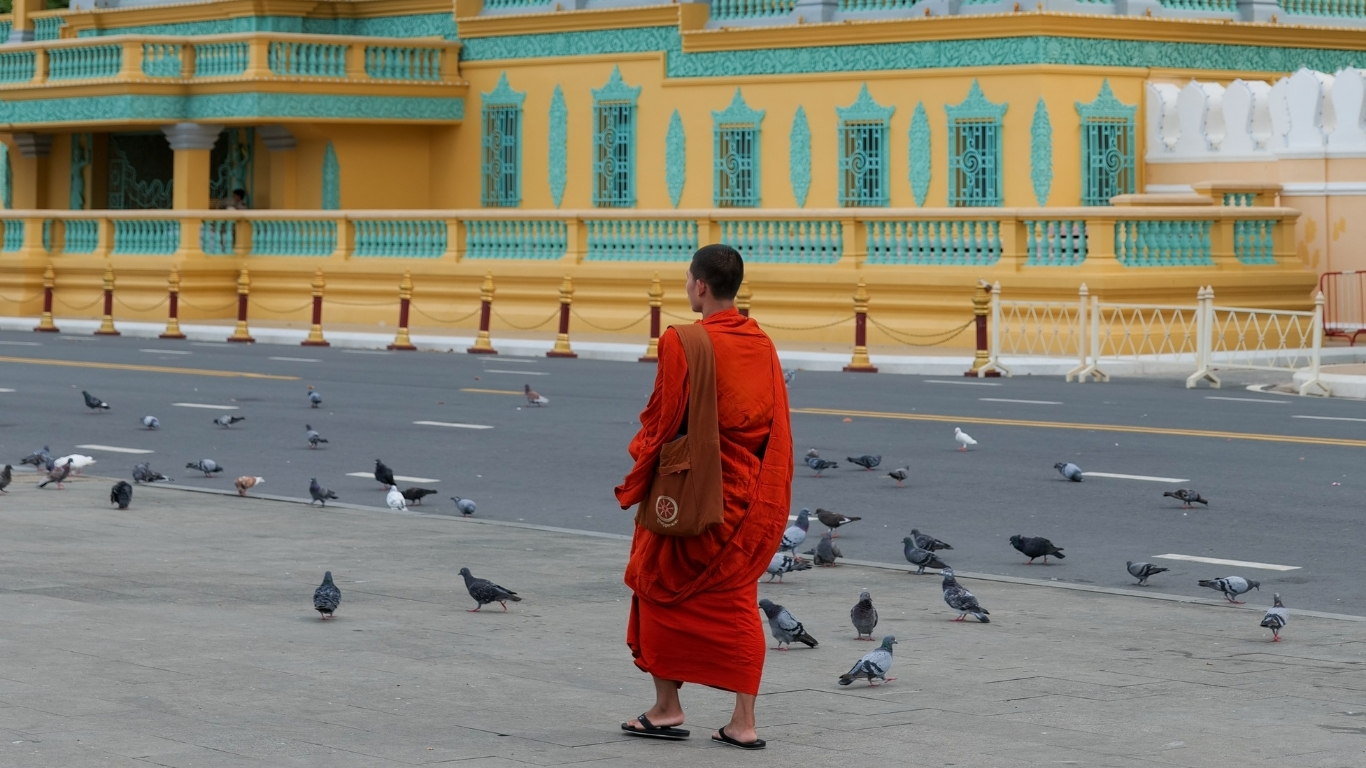
Cambodia’s capital offers plenty of indoor activities that make it well-suited for the rainy season. The city’s colonial architecture and tree-lined boulevards take on a romantic quality during rain showers.
Phnom Penh is worth visiting in July because:
- The Royal Palace and Silver Pagoda compounds are less crowded
- Museums like the National Museum and the Tuol Sleng Genocide Museum provide shelter during downpours
- The riverside promenade becomes vibrant and green
- Local markets remain bustling regardless of the weather
- The city’s excellent restaurants and cafés provide comfortable places to wait out rain showers
The rain in Phnom Penh typically follows a predictable pattern, with the heaviest downpours in the late afternoon. Morning and evening are often dry enough for comfortable exploration. The city’s drainage system handles rainfall reasonably well in most areas, though some street flooding can occur briefly during heavy showers.
Sihanoukville
While beach destinations may seem counterintuitive during the rainy season, Sihanoukville and Cambodia’s southern coast still offer appeal for certain travelers in July.
Visiting Cambodia’s coastal region in July provides:
- Dramatically reduced hotel rates (often 50% lower than peak season)
- Brief but intense rain showers that typically leave portions of the day dry
- Lush tropical vegetation framing the beaches
- Fewer tourists and a more laid-back atmosphere
- Excellent seafood at peak freshness
The main drawbacks are rougher seas and reduced visibility for snorkeling and diving. However, between rain showers, the beaches can still be enjoyed, and many resorts offer indoor spa facilities and swimming pools that make rainy periods enjoyable.
For island experiences, consider Koh Rong or Koh Rong Samloem, where the tropical downpours create a peaceful atmosphere among the jungle-covered hills.
Cardamom Mountains Region
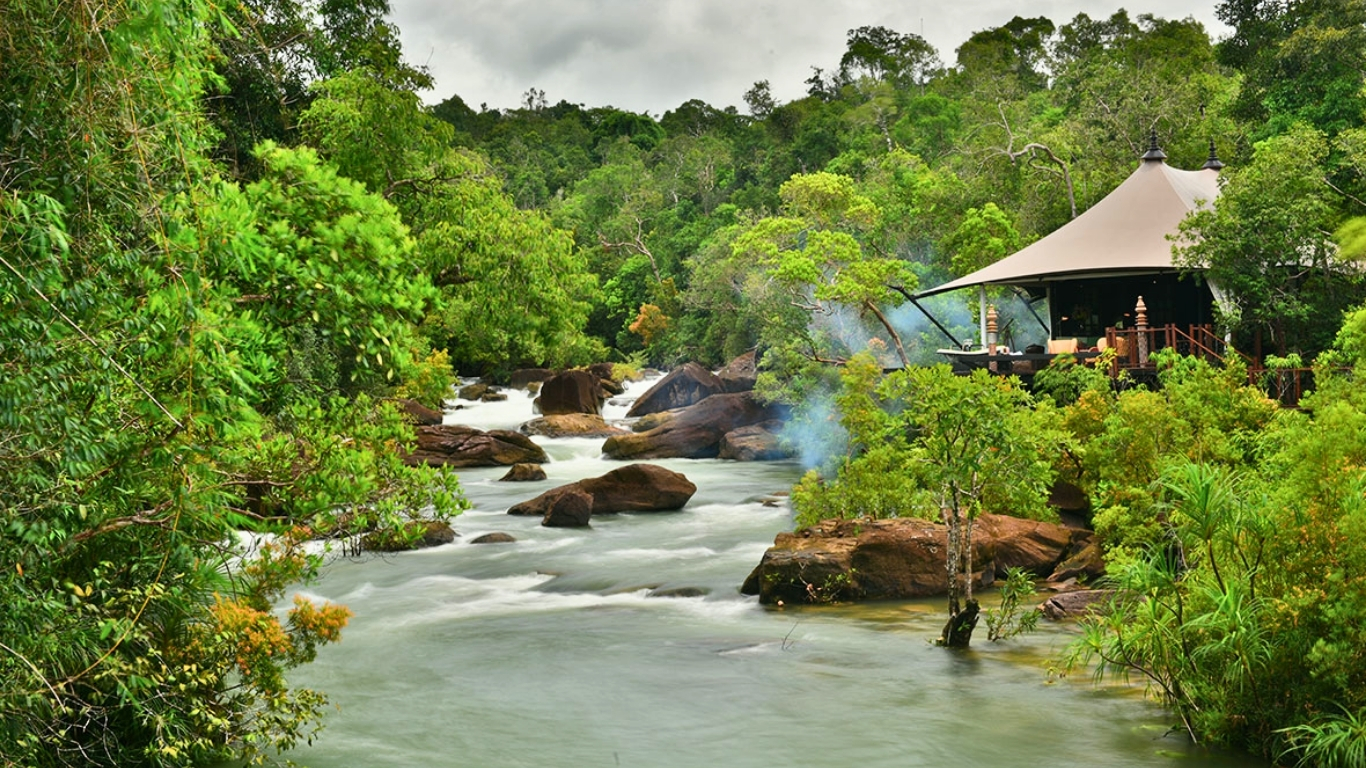
The Cardamom Mountains in western Cambodia offer perhaps the most rewarding July experience for nature lovers and adventure seekers.
This region becomes especially appealing in July because:
- Waterfalls reach their most spectacular flow rates
- The ancient rainforest thrives with new growth
- Wildlife viewing opportunities improve as animals become more active
- Cooler temperatures prevail due to elevation
- Ecotourism operations in Chi Phat and other communities offer guided experiences
The mountains do receive significant rainfall, but this is precisely what makes them special during this season. Trekking routes become more challenging but also more rewarding. The rainfall creates a dramatic soundtrack to jungle experiences, and rivers swell to their most impressive states.
Consider staying at eco-lodges in the region that are designed to embrace the rainy season, with covered viewing platforms and guided excursions planned around typical rain patterns.
Cost & Crowd
July falls firmly within Cambodia’s low season, creating significant advantages for budget-conscious travelers and those who prefer a more peaceful experience.
Reduced Crowds
- Major tourist sites operate at 30-50% of their peak season capacity
- Angkor Wat, which can see thousands of daily visitors in high season, becomes remarkably peaceful
- Popular photo spots no longer require waiting in line
- Restaurants and cafés offer more attentive service
- Tour groups are smaller, providing more personalized experiences
The reduction in tourist numbers creates a more authentic atmosphere throughout the country. Local markets return to serving primarily local customers, and you’ll have more opportunities for genuine cultural exchanges.
Cost Savings
The financial benefits of traveling to Cambodia in July are substantial:
- Hotel rates decrease by 20-40% from peak season prices
- Many boutique hotels offer “rainy season specials” with additional perks
- Tour operators provide discounts to attract visitors
- Restaurants may offer promotional menus
- Negotiating power increases for souvenirs and services
These cost savings allow travelers to either reduce their overall budget or upgrade their experience by staying at luxury properties that would be prohibitively expensive during high season. For example, five-star hotels in Siem Reap that charge $200+ per night in peak season might offer rooms for $120-150 in July.
The value proposition becomes even stronger when you consider that most attractions remain fully operational despite the weather. Temples, museums, cultural sites, and restaurants continue normal operations, just with fewer visitors.
For budget travelers, guesthouses and mid-range accommodations become particularly affordable, with clean, comfortable rooms often available for $15-30 per night in major tourist areas.
What to Pack for Cambodia in July
Packing smartly for Cambodia’s rainy season requires balancing protection from the elements with comfort in the tropical heat and humidity. The right gear will help you stay dry without overheating in the warm temperatures.
Essential Clothing
- Lightweight, quick-drying fabrics: Pack shirts, pants, and shorts made from synthetic materials that won’t stay soggy
- Rain jacket or poncho: Opt for breathable options with ventilation to prevent overheating
- Waterproof footwear: Sandals with good traction or water-resistant hiking shoes
- Extra sets of clothes: Having dry options to change into is essential
- Swimwear: Despite the rain, you’ll find opportunities to swim in hotel pools
Weather Protection
- Compact umbrella: Essential for urban exploration
- Waterproof phone case/dry bag: Protect electronics and important documents
- Wide-brimmed hat: Useful for both sun and rain protection
- Quick-dry microfiber towel: Handy for drying off after sudden showers
Health and Comfort Items
- Insect repellent: Mosquitoes are more prevalent during the rainy season
- Anti-fungal powder/spray: Helps prevent skin issues in humid conditions
- Electrolyte packets: Helpful for staying hydrated in humid weather
- Moisture-wicking underwear: Prevents chafing in high humidity
The key to comfortable travel during Cambodia’s rainy season is layering with appropriate materials. Cotton should be avoided as it retains moisture and dries slowly. Instead, focus on modern synthetic fabrics designed for tropical conditions.
For temple visits, remember that modest dress is required regardless of weather. Lightweight pants with zip-off legs or quick-drying long skirts are ideal for staying cool while respecting cultural norms.
Most accommodations provide umbrellas for guests, but having your own compact version allows greater flexibility. Similarly, while raincoats provide good protection, many travelers find that in Cambodia’s warm climate, a poncho offers better ventilation and comfort during brief showers.
Extra Travel Tips
When visiting Cambodia in July, timing your activities strategically can significantly enhance your experience. Plan outdoor explorations for morning hours when rainfall is less likely, and save indoor activities for the afternoon when showers typically occur.
Transportation considerations become more important during the rainy season. Book accommodations that offer shuttle services, as tuk-tuks become less practical during heavy downpours. Many hotels provide free umbrellas, but having your own compact one ensures you’re prepared at all times.
The increased humidity creates ideal conditions for mosquitoes, so be vigilant about insect protection, especially during dawn and dusk hours. Apply repellent regularly and consider bringing lightweight long-sleeved options for evening activities.
Photography enthusiasts will find July offers dramatic lighting conditions that can transform ordinary scenes into extraordinary images. The stormy skies and reflective surfaces create unique photographic opportunities, especially at iconic sites like Angkor Wat. Consider bringing a lens hood and microfiber cloths to manage moisture while shooting.
While the rainy season brings certain challenges, it also reveals Cambodia at its most vibrant and authentic. The countryside bursts with life, rivers flow strongly, and the ancient temples stand against dramatic skies. With proper preparation and a flexible attitude, visiting Cambodia in July rewards travelers with unique experiences, significant savings, and memories that differ from the standard tourist photos.
Whether you’re exploring temple ruins in the misty morning light, sampling local cuisine in uncrowded restaurants, or watching a thunderstorm roll across lush rice paddies, Cambodia in July offers a perspective on this beautiful country that the dry-season visitor never sees.
Thuy Dang – From Indochina Voyages Team

